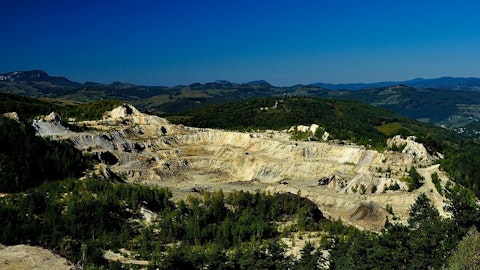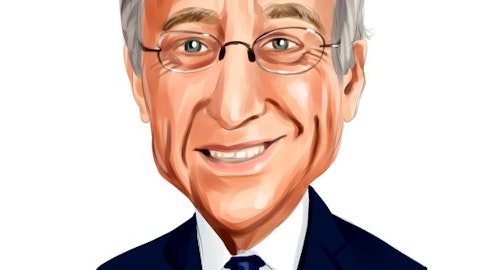Two weeks ago, we covered Goldentree Asset Management’s Steve Tananbaum being interviewed on Wall Street Week, which covered his own investing career, the state of the economy, and his belief in the traditional media space. Today we cover the program’s recent interview (embedded at the end of the article) with Donald Drapkin, the Chairman, Co-Founder, and Managing Partner of Casablanca Capital.

Founded in 2010 by Drapkin and Douglas Taylor, Casablanca Capital primarily pursues an activist strategy focused on mismanaged or misunderstood companies with strong business fundamentals. The fund currently has just one public equity position, a $34.24 million activist stake in Cliffs Natural Resources Inc (NYSE:CLF), which we recently rated as a cheap gold mining stock that is poised to explode. A former Vice Chairman of Lazard International, Drapkin began his career in 1971, and over the years has served on the boards of Molson and Revlon Inc (NYSE:REV), among other entities.
Follow Donald G. Drapkin And Douglas Taylor's Casablanca Capital
Following activist funds like Casablanca Capital is important because it is a very specific and focused strategy in which the investor doesn’t have to wait for catalysts to realize gains in the holding. A fund like Casablanca can simply create its own catalysts by pushing for them through negotiations with the company’s management and directors. In recent years, the average returns of activists’ hedge funds has been much higher than the returns of an average hedge fund. Furthermore, we believe do-it-yourself investors have an advantage over activist hedge fund investors because they don’t have to pay 2% of their assets and 20% of their gains every year to compensate hedge fund managers. We have found through extensive research that the top small-cap picks of hedge funds are also capable of generating high returns and built a system around this premise. In the 36 months since our small-cap strategy was launched it has returned 118% and beaten the S&P 500 ETF (SPY) by more than 60 percentage points (read more details).
In the interview, Drapkin was asked to describe some of the benefits of activist investing for other shareholders of that company, and he scoffed at the notion that there weren’t any.
“Well the theory that investors don’t benefit is a lot of nonsense. It’s a little bit like the late 70’s, early 80’s when the takeover boom started in the United States. Activism is only one step removed from the takeover boom. […] You go in because you want to make money for shareholders, and some activist deals are good, because the people who shake things up have done a good job, done their homework, and the companies need to be not complacent and treat their companies like country clubs, or this ‘investing for the long-term’. Everybody wants the long-term to be good, but there are things you can do in the short-term to make the company better, and that’s all anybody wants to do,” Drapkin said.
Some further criticisms of activism were raised, namely that some activists do not necessarily have the long-term health of the company in mind when they push for moves, with Drapkin admitting that not every activist is necessarily a good guy, while still defending the core of activist investing. Steering the conversation away from any flaws in activism, Drapkin set his crosshairs on high-frequency trading, citing the complete lack of fundamental evaluation of a company that goes into such trades, and questioning why more people aren’t criticizing such investments (although criticisms of it are out there, and growing).





